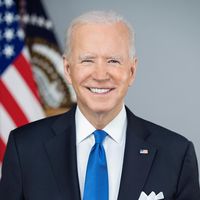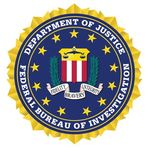Terror Strikes New Orleans: A New Year’s Nightmare
January 3, 2025, 9:38 pm

Location: United States, District of Columbia, Washington
Employees: 1001-5000
Total raised: $500K
The dawn of 2025 brought chaos to New Orleans. A city known for its vibrant celebrations and rich culture became the backdrop for a horrific act of violence. A truck, a weapon in the hands of a lone assailant, turned a festive gathering into a scene of terror.
On January 1, at approximately 3:15 AM, Shamsud-Din Jabbar, a 42-year-old Army veteran, drove a white Ford pickup truck into a crowd of New Year’s revelers in the French Quarter. The truck bore the black flag of the Islamic State, a chilling symbol of his allegiance to a group that has long been a scourge on global peace. The FBI confirmed that Jabbar acted alone, but his actions echoed the fears of many: terrorism can strike anywhere, at any time.
Witnesses described the moment of impact as surreal. The roar of the engine, the screech of tires, and then the sickening crunch of metal against flesh. People scattered like leaves in a storm, some screaming, others frozen in shock. The aftermath was a chaotic blend of horror and disbelief. At least 15 lives were lost, and dozens more were injured, including two police officers who bravely confronted the assailant.
Jabbar’s journey to this moment was as troubling as the act itself. He traveled from Houston to New Orleans, posting videos on social media that revealed his intentions. In these recordings, he expressed his support for the Islamic State and shared a twisted rationale for his actions. He claimed to have considered harming those close to him but opted instead for a public massacre, believing it would garner the attention he sought. This was not a crime of passion; it was a calculated act of terror.
The FBI’s investigation quickly confirmed the premeditated nature of the attack. Jabbar had rented the truck through a popular car-sharing app, a modern twist that highlights the accessibility of tools for violence. The presence of improvised explosive devices further underscored the seriousness of his intentions. This was not just a random act; it was a deliberate assault on innocent lives.
In the wake of the attack, New Orleans officials scrambled to bolster security. The city was set to host major events, including the Sugar Bowl and the Super Bowl. The juxtaposition of celebration and mourning painted a stark picture of the current reality. The vibrant streets of the French Quarter, usually filled with laughter and music, now echoed with sirens and the cries of the grieving.
President Joe Biden condemned the attack, labeling it “despicable.” His words resonated with a nation grappling with the specter of domestic terrorism. The Islamic State, though weakened in its strongholds abroad, continues to inspire individuals like Jabbar. The internet serves as a breeding ground for radicalization, allowing extremist ideologies to spread like wildfire.
The victims of this tragedy were not just numbers. They were individuals with dreams and aspirations. Among them was a mother who had just secured a new job, a young athlete home for the holidays, and an aspiring nurse. Their lives were cut short in an instant, leaving families shattered and communities in mourning.
As the investigation unfolds, questions linger. What drove Jabbar to this point? Was it a sense of belonging to a cause, however twisted? Or was it a deeper personal struggle that led him to seek validation through violence? The answers may never fully emerge, but the impact of his actions will resonate for years to come.
Cities across the United States reacted swiftly. Security measures were heightened in major urban areas, including New York City and Washington, D.C. The specter of violence loomed large, a reminder that safety is often an illusion. The New Year, a time for hope and renewal, was overshadowed by fear and uncertainty.
This incident serves as a grim reminder of the fragility of peace. It underscores the need for vigilance and community resilience. In the face of terror, unity becomes paramount. Communities must come together to support one another, to heal, and to ensure that such acts of violence do not define their narrative.
As New Orleans mourns, the nation watches. The story of Shamsud-Din Jabbar is not just a tale of one man’s descent into darkness; it is a reflection of a broader societal issue. The fight against extremism is far from over. It requires a collective effort to address the root causes of radicalization and to foster an environment where love triumphs over hate.
In the end, the New Year’s attack in New Orleans is a call to action. It challenges us to confront the uncomfortable truths about our society. It urges us to build bridges instead of walls, to listen instead of shout, and to stand together against the tide of violence. The road ahead may be fraught with challenges, but together, we can pave a path toward healing and hope.
On January 1, at approximately 3:15 AM, Shamsud-Din Jabbar, a 42-year-old Army veteran, drove a white Ford pickup truck into a crowd of New Year’s revelers in the French Quarter. The truck bore the black flag of the Islamic State, a chilling symbol of his allegiance to a group that has long been a scourge on global peace. The FBI confirmed that Jabbar acted alone, but his actions echoed the fears of many: terrorism can strike anywhere, at any time.
Witnesses described the moment of impact as surreal. The roar of the engine, the screech of tires, and then the sickening crunch of metal against flesh. People scattered like leaves in a storm, some screaming, others frozen in shock. The aftermath was a chaotic blend of horror and disbelief. At least 15 lives were lost, and dozens more were injured, including two police officers who bravely confronted the assailant.
Jabbar’s journey to this moment was as troubling as the act itself. He traveled from Houston to New Orleans, posting videos on social media that revealed his intentions. In these recordings, he expressed his support for the Islamic State and shared a twisted rationale for his actions. He claimed to have considered harming those close to him but opted instead for a public massacre, believing it would garner the attention he sought. This was not a crime of passion; it was a calculated act of terror.
The FBI’s investigation quickly confirmed the premeditated nature of the attack. Jabbar had rented the truck through a popular car-sharing app, a modern twist that highlights the accessibility of tools for violence. The presence of improvised explosive devices further underscored the seriousness of his intentions. This was not just a random act; it was a deliberate assault on innocent lives.
In the wake of the attack, New Orleans officials scrambled to bolster security. The city was set to host major events, including the Sugar Bowl and the Super Bowl. The juxtaposition of celebration and mourning painted a stark picture of the current reality. The vibrant streets of the French Quarter, usually filled with laughter and music, now echoed with sirens and the cries of the grieving.
President Joe Biden condemned the attack, labeling it “despicable.” His words resonated with a nation grappling with the specter of domestic terrorism. The Islamic State, though weakened in its strongholds abroad, continues to inspire individuals like Jabbar. The internet serves as a breeding ground for radicalization, allowing extremist ideologies to spread like wildfire.
The victims of this tragedy were not just numbers. They were individuals with dreams and aspirations. Among them was a mother who had just secured a new job, a young athlete home for the holidays, and an aspiring nurse. Their lives were cut short in an instant, leaving families shattered and communities in mourning.
As the investigation unfolds, questions linger. What drove Jabbar to this point? Was it a sense of belonging to a cause, however twisted? Or was it a deeper personal struggle that led him to seek validation through violence? The answers may never fully emerge, but the impact of his actions will resonate for years to come.
Cities across the United States reacted swiftly. Security measures were heightened in major urban areas, including New York City and Washington, D.C. The specter of violence loomed large, a reminder that safety is often an illusion. The New Year, a time for hope and renewal, was overshadowed by fear and uncertainty.
This incident serves as a grim reminder of the fragility of peace. It underscores the need for vigilance and community resilience. In the face of terror, unity becomes paramount. Communities must come together to support one another, to heal, and to ensure that such acts of violence do not define their narrative.
As New Orleans mourns, the nation watches. The story of Shamsud-Din Jabbar is not just a tale of one man’s descent into darkness; it is a reflection of a broader societal issue. The fight against extremism is far from over. It requires a collective effort to address the root causes of radicalization and to foster an environment where love triumphs over hate.
In the end, the New Year’s attack in New Orleans is a call to action. It challenges us to confront the uncomfortable truths about our society. It urges us to build bridges instead of walls, to listen instead of shout, and to stand together against the tide of violence. The road ahead may be fraught with challenges, but together, we can pave a path toward healing and hope.
